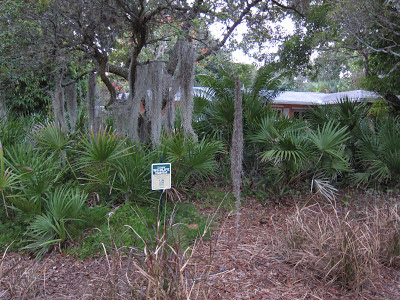Translate
Monday, February 25, 2013
Florida Skies I: Sunrise, Sunset
Naples Beach, above, at sunrise.
Below, looking toward the Gulf through native trees at Crane Point Wildlife Sanctuary in Marathon, the Keys.
Above, sunrise at Marathon.
To the right, one of many "Tiki Bars," this one in Islamorada, the Keys, at sunset.
Sunrise from a causeway in the Keys, looking northwest toward the Gulf.
Below, sunset at Key West.
What follows are chapters showing images from a bike trip, February 2013:
Start was in Ft Lauderdale, biked through Miami and down the Keys to Key West.
Ferry to the area of Naples on the west coast.
Then biked north past Corkscrew Swamp to Clewiston on Lake Okeechobee and east to Palm Beach. Then one day south back to Ft. Lauderdale.
Total mileage: 440 miles. Days of cycling: 8.
Source of information and cycling route maps: Adventure Cycling.
Link: http://www.adventurecycling.org
Southern Florida Skies II: From the Bike
Early morning fog on the levee of Lake Okeechobee, left. From the bike path that runs on the top of the levee near Clewiston.
Thunderstorms approaching Boca Raton, to the right. Taken from Route A1A.
Sparkling sun reflecting off the water, midday Key West. Taken from the sidewalk along the road next to the water.
Above, image looking east across the Intracoastal Waterway from a causeway near Fort Lauderdale.
To the left, one of the 180 bridges that string together the Keys.
Below, looking north toward Boca Raton from the drawbridge that links A1A along the barrier island beaches with the mainland.
Sunday, February 24, 2013
On the Road in Florida
There is a bike route all the way to Key West, although largely on existing roads. Alan is barely visible in the photo above, cycling on the highway shoulder.
Alan below has to carbo load. The ride was rough.
There are 180 causeway bridges between the tip of Florida and Key West. Some have separate bridges for pedestrians, bikers - and fishermen. Alan is getting ahead of me in the picture to the right - again.
Alan rests in the shade of native trees at Crane Point Nature Refuge in Marathon.
Bike Trip Starts: Miami Beach Area
Alan looking up at roadsigns in Miami. We followed A1A along the coast.
Alan in photo to left, bikes out of the Einstein Bagels in a mall in Miami Beach.
Miami Beach skyscrapers below.
South Beach Art Deco Downtown.
Hollywood Beach Walk.
People on the Road to Key West
Sashy at Florida City Hostel, above. Dutch biking couple below. They have biked the entire US eastern coast.
Muffin man at the South Beach Art Deco District Farmers Market above.
Dion with touring Bike Friday at Key West hostel below.
More conventional tourists (or locals?) at Wendy's in Marathon.
Key West I
Funny thing, there are feral chickens everywhere in Key West.
Preparing for sunset on the wharf: lots of Margueritas.
Fried Cuban food: conch fritters.
Key West II
Gathering to watch the sun set is a ritual in Key West.
The red marker shows this is the southernmost point in the United States.
There is a circus like atmosphere, with vendors, performers, jugglers, and lots of drinks.
Picture to the right: drinking, talking on a cellphone and watching the sun set all at the same time, as well as checking out the scene on the wharf.
The red marker shows this is the southernmost point in the United States.
There is a circus like atmosphere, with vendors, performers, jugglers, and lots of drinks.
Picture to the right: drinking, talking on a cellphone and watching the sun set all at the same time, as well as checking out the scene on the wharf.
Some Southern Florida Landscaping
Natural habitat landscaping above, with native plants.
Across the street from boring conventional property to the right in a Naples suburb.
Miami, a bit more colorful.
Naples Botanical Garden, edging toward a more native look, although with colorful Bromeliads.
Below, beautiful Live Oak trees in a county park in the Keys.
Naples Botanical Garden
A more natural setting at Naples Botanic Garden, above, with Royal Palms and Sawgrass.
The palm collection with Cuban Petticoat Palm.
Naples Botanic Garden link here: http://www.naplesgarden.org/gardens.shtml
The palm collection with Cuban Petticoat Palm.
A miniature collection of succulents.
The Dancing Tree (Ceiba erianthos), native to Brazil.Naples Botanic Garden link here: http://www.naplesgarden.org/gardens.shtml
Corkscrew Swamp
Corkscrew Swamp is possibly the premier Audubon sanctuary. It is east of Ft Myers, Florida and is one of the only remaining refuges for uncut Bald Cypress trees. Above, young Pond Cypress trees (Taxodium ascendens), a smaller cypress that is found in ponds rather than swamps. Link here: http://corkscrew.audubon.org
Snowy Egret (I think).
In the background above, the luminous, looming Pond Cypress hammock has not yet leafed out. The Wet Prairie grassland in the foreground: "Slightly lower in elevation than the Pine Flatwoods, a combination of nutrient-poor soils , fire, and flooding help keep this grass-dominated prairie from becoming a Pine Flatwood or a cypress swamp."
Snowy Egret (I think).
Barred Owl.
In the background above, the luminous, looming Pond Cypress hammock has not yet leafed out. The Wet Prairie grassland in the foreground: "Slightly lower in elevation than the Pine Flatwoods, a combination of nutrient-poor soils , fire, and flooding help keep this grass-dominated prairie from becoming a Pine Flatwood or a cypress swamp."
Subscribe to:
Comments (Atom)

















































